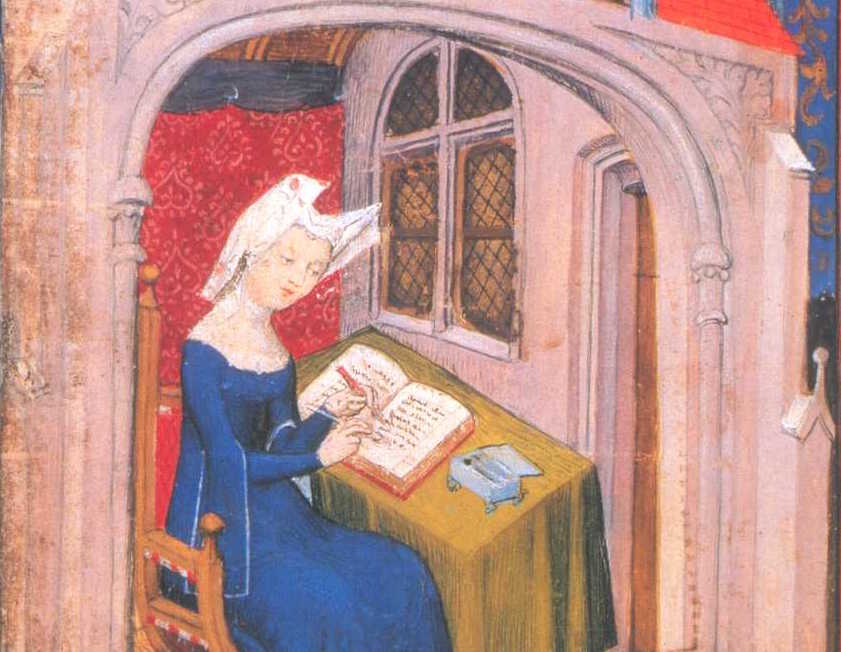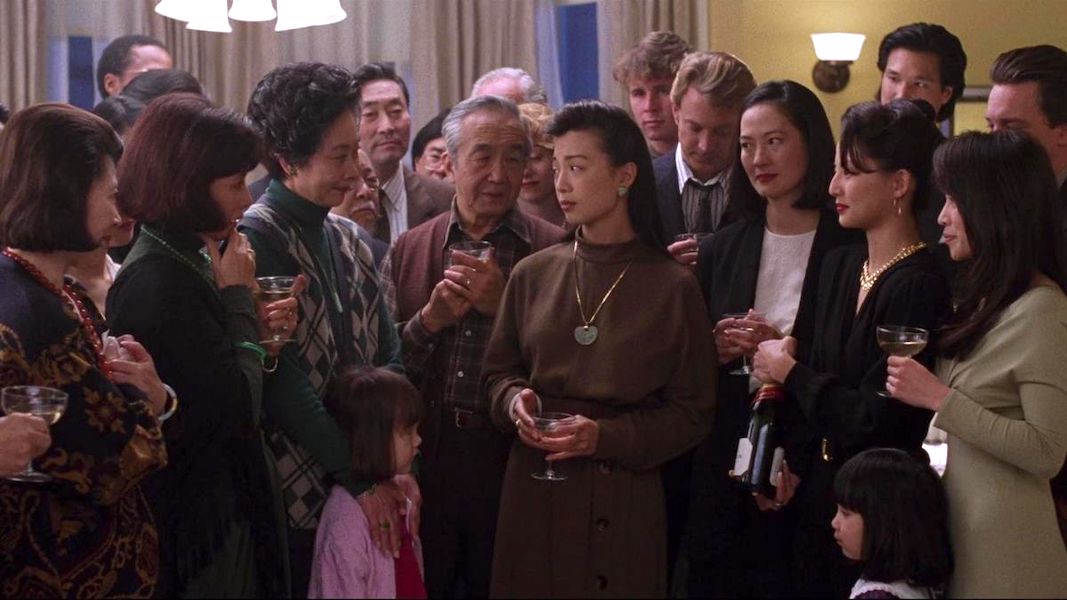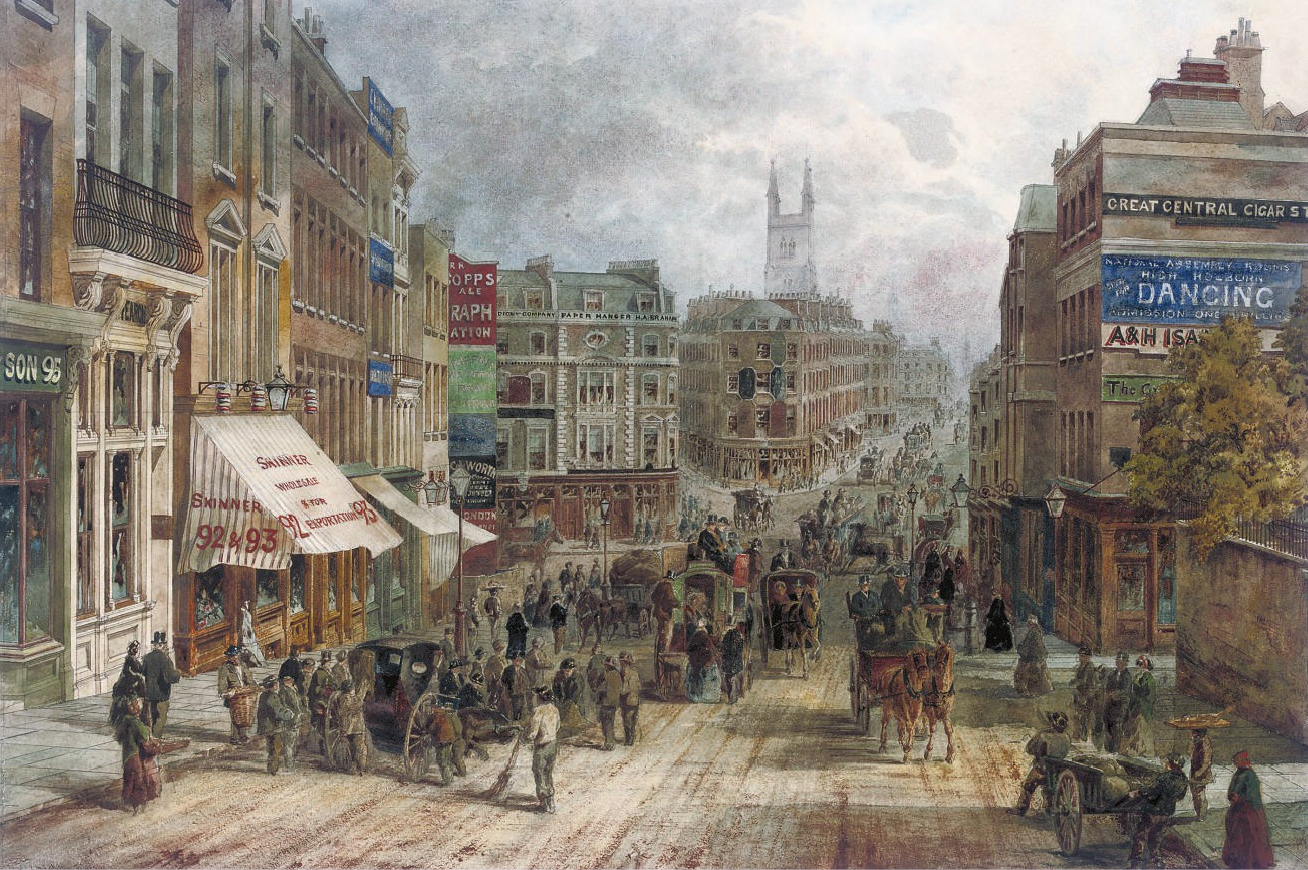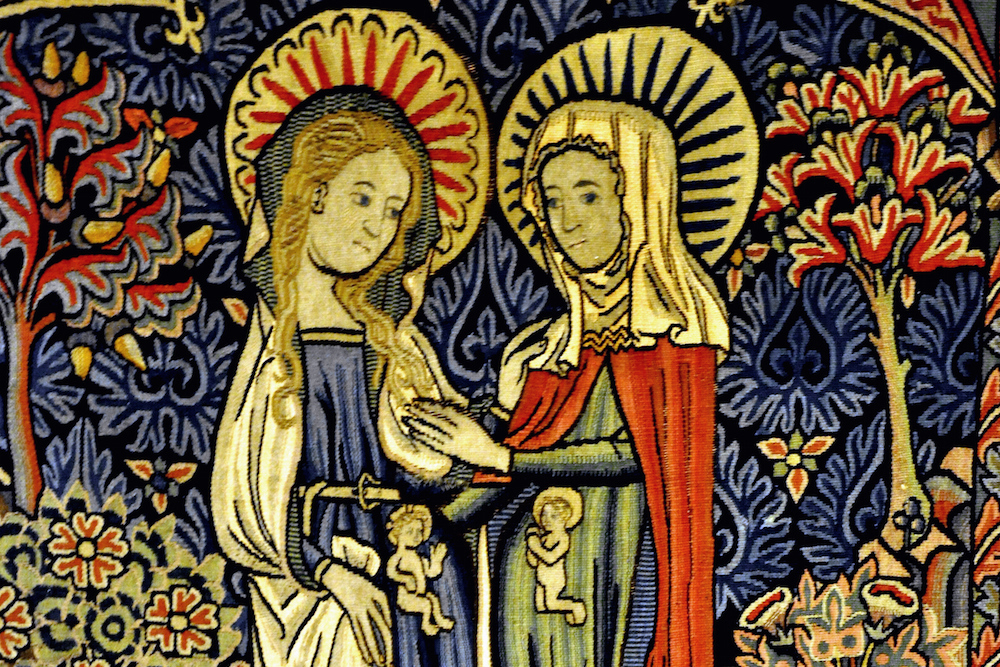Books & Culture
Margery Kempe Had 14 Children and She Still Invented the Memoir
Introducing the medieval patron saint of moms who also write

Not many people know this, but the first memoir in the English language was probably written by a mom who cried a lot.
The Book of Margery Kempe is mostly the kind of text you read if you’re a medievalist, or maybe an English major at a women’s college, although I was an English major at a women’s college and I didn’t read it until I was in graduate school. It’s a shame that The Book isn’t more widely known, because we’re missing out on an important entry—possibly the very first—in the writer mom canon. The Book’s depiction of Margery’s spiritual reinvention is also a startling portrayal of a woman who strains against the parameters of her life and then reimagines them. And it is the story of a woman who becomes a writer because she believes that what she has to say is something that others should hear, even though she doesn’t fit neatly into any of the categories of people whose stories are understood to matter.
My brain—my one beauty!—became saturated with the responsibilities of motherhood.
Writing almost always feels impossible when you’re a mother with young kids, even while you’re actually doing it. I was unprepared for this truth when, a year into my literature Ph.D. program, I decided to grow a human being inside my body for the first time. New motherhood blindsided me like a semi truck. There was, naturally, the prisoner of war-level sleep deprivation. There was the fact that breastfeeding physically tethered me to my child like one of those yo-yo balls from the ‘90s, able to extend only so far before I had to rocket right back. But the hardest part was the way motherhood infiltrated every last corner of my consciousness. The well-rested idiot that I was before kids must have imagined that, with the onset of parenthood, my brain would become helpfully bifurcated: one side devoted to the vulnerable glow worm I had just birthed and the other held in quarantine, reserved for the work of thinking and writing. Instead, a potent cocktail of hormones and preexisting anxiety meant that my brain—my one beauty!—became saturated with the responsibilities of motherhood and the idea of the responsibilities of motherhood. Every minute was now a minute when someone might potentially need me. If I wanted to write, I needed not only to set aside the time and money to physically leave my child, but also to figure out how to mentally leave her behind. During those first few months, all of those things—time, money, and the ability to think deeply about anything—ranged from paltry to nonexistent. This was very unfortunate because I still had a dissertation to finish. Luckily, one of the subjects of that dissertation happened to be Margery Kempe, the patron saint of writer moms.
Like any story of religious conversion, The Book describes Margery’s pre-visionary life. She tries her hand at running a brewery and a grain mill, both common in-home businesses for late-medieval women in England, but both businesses ultimately fail. Then, after a spiritual awakening precipitated by mystical visions, Margery decides to pursue a religious calling and dedicate her life to Christ. The problem is that when you are a 15th-century married woman with young children, dedicating your life to Christ is a complicated proposition. When she makes this decision, Margery is no longer of the right age or virginity status to become a nun, but is still too young and married to enter a convent as an older widow, as some women did at that time. Instead, she creates her own idiosyncratic path. She travels widely, visiting various pilgrimage sites in England, throughout Europe, and even as far as Jerusalem. Everywhere she goes she confuses people by blurring boundaries. She insists, for example, on wearing white clothing, a symbol of virginity, despite the undeniable existence of her 14 children. She also adopts the kind of intercessory role usually reserved for priests. She is repeatedly asked by her fellow Christians to pray for them and at one point develops a reputation for being able to tell others if they are saved or damned. At the same time, she becomes known, and widely despised, for her loud and boisterous weeping, which she does every time she thinks about Christ. She thinks about Christ a lot.
Most medieval female visionaries were cloistered virgins, not married mothers of 14, so it is an uphill battle for Margery to be taken seriously.
The question of who possessed the authority to speak and write about God and the Bible was very much a live one during Margery’s life. Biblical interpretation and other religious writing was mostly a man’s game, mostly priests. The exceptions were women who experienced mystical visions, often understood to confer a kind of parallel, if slightly inferior, form of authority. Even so, those visions and their religious meaning were often filtered through a male scribe, usually a confessor, whose involvement in the production of that text was another, necessary authorization. Most medieval female visionaries were cloistered virgins, not married mothers of 14, so it is an uphill battle for Margery to be taken seriously and to get her book written. She fights for her book just as she fights for her unusual spiritual role. Serving as an intercessor between God and her fellow Christians meant stepping into a role that was parental but patriarchal. Perhaps because she becomes a visionary and a mother almost simultaneously, Margery attempts to reinsert motherhood into the spiritual parentage conversation from which it had been excised. In one of my favorite passages of The Book, Christ tells Margery that she should “make every Christian man and women your child in your soul…and have as much grace for them as you have for your own children.” In a spiritual economy in which women could either be spiritual mothers or physical mothers, this vision of Christ suggesting that it is precisely Margery’s physical maternity that makes her a great spiritual intercessor is nothing short of radical. It is, perhaps, the strongest affirmation of physical maternity in Middle English, making the case for the physical, lived experience of motherhood as a prerequisite for spiritual care rather than a disqualification. Margery can no longer be a virgin visionary, but she refuses to be a silent mother.
It is important to note that The Book of Margery Kempe is a book written by a mother but it is not a book about being a mother. It mostly ignores the years Margery spent birthing and raising her children. But motherhood, and the way it changed her, is suffused throughout the text. The story that The Book tells, one that Margery works hard to get down on parchment, suggests that the experience of becoming a mother was integral to Margery’s spiritual and literary aspirations. The first story she tells us is of a childbirth so difficult that she thinks she may not survive. Wishing to confess before death, she sends for her priest. But he is “too hasty” with her and she never ends up fully confessing. A period of madness follows, almost nine months of terrifying visions. There are devils and the flames of hell; she tears at her own skin trying to end her life. Finally, when her first baby has been out almost as long as it was in, Margery is restored to herself by a vision of Christ promising love and acceptance.
The Book of Margery Kempe is a book written by a mother but it is not a book about being a mother.
It is not hard to see how this experience is reflected in the religious role Margery ends up creating for herself. Many of the people she encounters are put off by her tears and her refusal to adhere to socially acceptable religious categories, but there also seem to be plenty of others, including members of the clergy, in need of a boundary-blurring spiritual mediatrix. The relationships between Margery and those who come to her for counsel are sometimes described using the language of motherhood. One priest who looks to Margery for spiritual guidance calls her “mother.” The Book notes that he is comforted by her words and that he treats her “as if he had been her own son born of her body.” I probably don’t need to tell you that tying spiritual comfort and authority to the language of bodily maternity was radical in the 15th century, just as it is radical today.
Notably, The Book suggests that Margery had a particular ministry among women. She visits with one woman suffering from temptations so great they render her unable to engage in any devotional activities. Later, The Book describes how she goes to see a woman who is “out of her mind” after childbirth. The woman’s husband tells Margery that his wife “roars and cries so that she makes folk terribly afraid.” They have put manacles on her wrists, he says, because she “will both smite and bite.” But when Margery enters the house, the woman speaks to her calmly. She tells Margery she is comforted by her presence and asks her not to leave. Margery continues to visit the woman every day, even when her behavior with other people becomes so violent that she is bound in iron chains. She prays for the woman to be restored to her wits, which she eventually is. Writing about this episode, scholar Lynn Staley notes that in helping the postpartum woman, Margery “seems to offer consolation to her former self.” It is not hard to imagine why Margery might have been popular among married and childbearing women. When she arrives in Leicester the Mayor there accuses her of coming to town in order to lead all of their wives away from them. I will always wonder what she was saying to those women in Leicester, and other women in other towns, just as I will wonder whether, when she finally succeeded in getting her book written, those women or their daughters read it and, seeing something of themselves, found comfort in it.
Margery’s Book offers perhaps the earliest example of how childbirth and motherhood can become generative in a literary context—even, or perhaps especially, when the writing is not about childbirth and motherhood. We need all the examples we can get. I am, I’m sure, one among many women writers who look to established women authors as guideposts. We scour interviews like detectives, hoping to gather clues about what it takes to turn the ideas in our heads into bound books with our names on them. That’s why comments like Lucy Ellmann’s in The Guardian—“You watch people get pregnant and know they’ll be emotionally and intellectually absent for 20 years”—are a punch in the gut. In another interview, she notes that the narrator of Ducks, Newburyport, a mother of four, “clearly has too many children”; too many for herself, for the planet, for the desire to do anything other than raise children. Perhaps some children would be fine, but not so many. And it’s true that, when I think about the women writers whose work I love, I note that nearly all of them have at most two children. I have three children under the age of eight: a veritable surplus of intellectual absence.
By Ellmann’s standards, Margery Kempe certainly had too many children. And, in fact, The Book’s account of her life seems to support Ellmann’s point about pregnancy heralding two decades of “intellectual absence.” Margery writes that it was twenty years or more from the time she first had her revelations until the time she could get them down on parchment. This is partially by choice—she tells her readers that for a long time she was “commanded in her soul” that she not yet write it down—and in part because it takes her a while to find a scribe who would agree to help her and then live to finish it. When she finally does get her story out into the world, she warns readers that it isn’t written in chronological order but instead in the order it came into her mind while she was writing it since “it was so long before it was written that she had forgotten the time and the order when things befell.” Truly, a mom at work.
I don’t need a scribe, but having children means that time is rarely under my control. When I had only one child, I used to get up at 5:30 to have an extra, quiet hour to write. These days, I’m often up just as early but it is neither extra nor quiet. Sometimes I end up writing a few sentences with a four-year-old on my lap. We watch the sun come up and I think about all of the hours I squandered before I had kids. Trying to write this very essay while my children were out of school for two weeks was representational in its abject horror and futility. But while it is true that there is less time to write when you have small children, it is not necessarily true that you have less time to think. When I am lying awake at 4:30 am, having been woken for a “drink emergency,” I am thinking. I am exhausted, but I am thinking. I turn ideas over in my head as I flip pancakes in the kitchen. Sentences or phrases sometimes spring to mind fully formed while I perform the repetitive tasks that parenthood demands. I once wrote the first draft of an essay while flying halfway across the country with all three kids. One arm held a sleeping baby while the other alternated between handing out snacks and typing into the Notes app on my phone. Having children has made me into a paragon of efficiency, teaching me to take the time when I can rather than hold out for the perfect moment. Margery waited decades to put her life to paper. I guess I don’t have that kind of patience, or maybe this overcrowded life is just the command that my particular soul was waiting for. Parenthood has undoubtedly given me more than it has taken. Children are defamiliarization machines, and seeing the world through three more sets of eyes enriches the quality of my own thought. Writing demands time, but ideas require stimuli, and I have no shortage of stimuli.
Children are defamiliarization machines, and seeing the world through three more sets of eyes enriches the quality of my own thought.
There are fewer gates to keep these days than in Margery’s time, or maybe the gates are just different, but we all need to feel authorized to write. There are some who would use motherhood as a cudgel or a cautionary tale in an attempt to convince us that becoming a mother—or too much of a mother—means locking ourselves out of the writing life. But the truth is that, like Margery, I found that motherhood unlocked something in me. Maybe it was surviving four days of labor or fourth months of no sleep, but when I emerged from the fog, I had more to say and an increasingly fiery need to say it. Those first weeks and months of motherhood threw me for a loop, but in retrospect the hormones saturating my brain were preparing it for a messier but more fertile creative stage. Like my life, it was never going to be helpfully bifurcated—but, like my life, the chaos enhances more than it impedes. The impact of having kids on my creative output is, in fact, so profound that I sometimes worry that it’s fueled by the hormonal changes that come with pregnancy and breastfeeding, and will disappear now that I’ve weaned my youngest child. Having children has simultaneously fried my brain and made it sharper and more focused. I don’t know how this is possible, but it is my truth. I see things differently now because growing and birthing a baby changes you. It can change your palate and your shoe size and it most certainly changes your brain. For Margery, this meant a series of divine visions that altered the course of her life. For most of us, the changes are far less spiritual, but they can be similarly revelatory.
Of course there are many women authors who have managed to create both children and books, even some with more than two children. But Ellmann’s comments do contain a kernel of truth: becoming a mother must necessarily change one’s relationship to writing. The reality is that children require the very same things to thrive as writing: time and sustained attention. I am always making a choice, even if sometimes that choice is doing both with less than ideal devotion. This is why I need Margery Kempe—and maybe you do, too.
There are scholars who argue that Margery’s Book was like a For Your Consideration screener for sainthood, that she was hoping it would get her the exposure she needed for canonization after her death. Christendom never recognized Saint Margery, but it’s time we think about how The Book can serve as a spiritual balm for women looking for a literary reflection of the ways in which motherhood can elevate rather than impede writing, or for women who seek a third option when it seems like the only choices are art monster or intellectually absent mom. Here’s what we can learn from Margery Kempe, patron saint of writing mothers: cry if you must, then bulldoze your own path.









